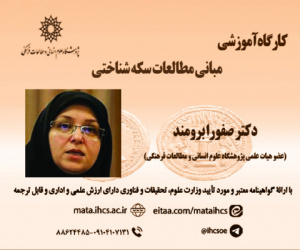تاب آوری شهر کرمانشاه و شیوه های ارتقاء آن (مقاله علمی وزارت علوم)
درجه علمی: نشریه علمی (وزارت علوم)
آرشیو
چکیده
اهمیت شهرها به عنوان شکل غالب سکونتگاه های انسانی روشن است، از سویی میزان آسیب پذیری شهرها با وجود بلایای طبیعی اتفاق افتاده در سال های اخیر رو به افزایش است. امروزه بروز سوانح طبیعی و ایجاد خسارات ناشی از این سوانح موجب گردیده تا ایمن تر نمودن شهرها، به یک چالش درازمدت اما دست یافتنی تبدیل شود؛ به طوری که جوامع شهری برای بازگشت سریع به وضعیت پیش از بحران در زمان وقوع مخاطرات طبیعی برآنند که تاحدودی از خسارات وارده بکاهند. در این میان، تاب آوری راهی مهم برای تقویت جوامع شهری با استفاده از ظرفیت های آن ها است. هدف پژوهش حاضر شناسایی شاخص های تاب آوری شهری نسبت به حوادث طبیعی است. این پژوهش بر اساس هدف توسعه ای و ماهیت توصیفی- تحلیلی به شیوه پیمایشی در سال 1401 در شهر کرمانشاه انجام شده است. داده ها با استفاده از بررسی های اسنادی و پرسشنامه جمع آوری شد. حجم نمونه با استفاده از روش سرشماری، 20 نفر تعیین گردید. برای نمونه گیری از نمونه گیری قضاوتی و نمونه گیری گلوله برفی استفاده شده است. داده ها از روش دلفی فازی در شناسایی 38 زیر شاخص های مؤثر در تاب آوری در برابر حوادث طبیعی، وزن دهی عوامل یا معیار مدل پیشنهادی و طبقه بندی آن ها در چهار گروه کلی ساختاری- کالبدی، مدیریتی- سیاست گذاری، اجتماعی فرهنگی و اقتصادی، تجزیه وتحلیل شدند. پس از رتبه بندی شاخص های تاب آوری شهر کرمانشاه در برابر حوادث طبیعی مشخص گردید که شاخص ساختاری- کالبدی رتبه اول، شاخص مدیریتی- سیاست گذاری رتبه دوم، شاخص اقتصادی رتبه سوم، شاخص اجتماعی فرهنگی رتبه چهارم را کسب نموده اند. نتایج حاصل از بررسی زیرمعیارهای مربوط به معیار کالبدی نشان دهنده آن بود که از بین شاخص های تاب آوری، شاخص کالبدی تأثیرگذارترین بوده لذا پهنه بندی شهر کرمانشاه بر اساس میزان تاب آوری کالبدی و مشارکت فعالانه شهری و به اشتراک گذاشتن تجربیات برای افزایش تاب آوری شهر کرمانشاه و زمینه سازی برای جلب مشارکت و آماده سازی مردم برای مواجهه با مواقع بحرانی ضروری به نظر می رسد.Resilience of Kermanshah and ways to improve it
The importance of cities as the dominant form of human settlements is clear, on the other hand, the vulnerability of cities is increasing despite the natural disasters that have occurred in recent years. Today, the occurrence of natural disasters and the damage caused by these accidents have made making cities safer, becoming a long-term but achievable challenge; So that in order to quickly return to the pre-crisis situation when natural hazards occur, urban communities are determined to reduce the damages to some extent. Meanwhile, resilience is an important way to strengthen urban communities by using their capacities. The purpose of the present study is to identify the indicators of urban resilience to natural disasters. This research was conducted based on the development goal and "descriptive-analytical" nature in the survey method in 1401 in the city of Kermanshah. Data were collected using document reviews and questionnaires. The sample size was determined by using the census method, 20 people. Judgment sampling and snowball sampling were used for sampling. The data from the fuzzy Delphi method were analyzed to identify 38 sub-indices effective in resilience against natural disasters, weighting the factors or criteria of the proposed model and classifying them into four general groups: structural-physical, management-policy, socio-cultural and economic. After ranking the resilience indicators of Kermanshah against natural disasters, it was determined that the structural-physical index ranked first, the managerial-policy index ranked second, the economic index ranked third, and the socio-cultural index ranked fourth. The results of the examination of the sub-criteria related to the physical criterion showed that among the resilience indicators, the physical index was the most effective, therefore the zoning of the city of Kermanshah based on the level of physical resilience and active urban participation and sharing experiences to increase the resilience of the city of Kermanshah and lay the groundwork for Attracting participation and preparing people to face critical times seems necessary.







